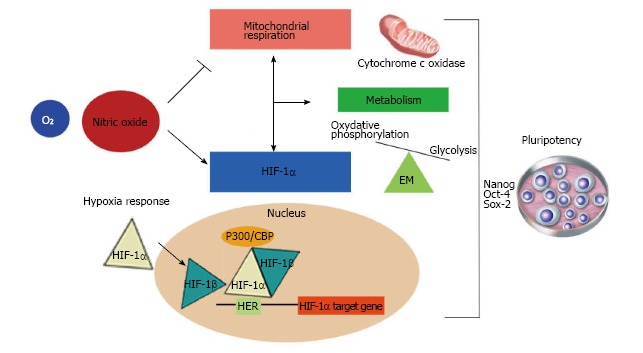Figure 2.

The role of nitric oxide as a regulator of mitochondrial function, metabolism and the hypoxia response. The wide range of functions controlled by nitric oxide (NO) is a consequence of its dose-dependent dual roles. Physiological concentrations of NO inhibit cytochrome c oxidase in a reversible manner in competition with O2. This interaction depends on NO and oxygen concentrations and the redox state of the enzyme. Because of this, it has been reported that NO might be a regulator of cell respiration, modulating metabolic changes responsible for an increase in glycolytic pathway flux to maintain energy homeostasis. On the other hand, NO can also regulate the hypoxia response through hypoxia inducible factor-1α (HIF-1α). In a normoxic microenvironment, NO induces HIF-1α accumulation in a mitochondrial-dependent and -independent manner. Hypoxia conditions promote delayed cell differentiation. These facts indicate that NO might maintain pluripotency via regulation of metabolism and the hypoxia response. EM: Energy metabolism.
